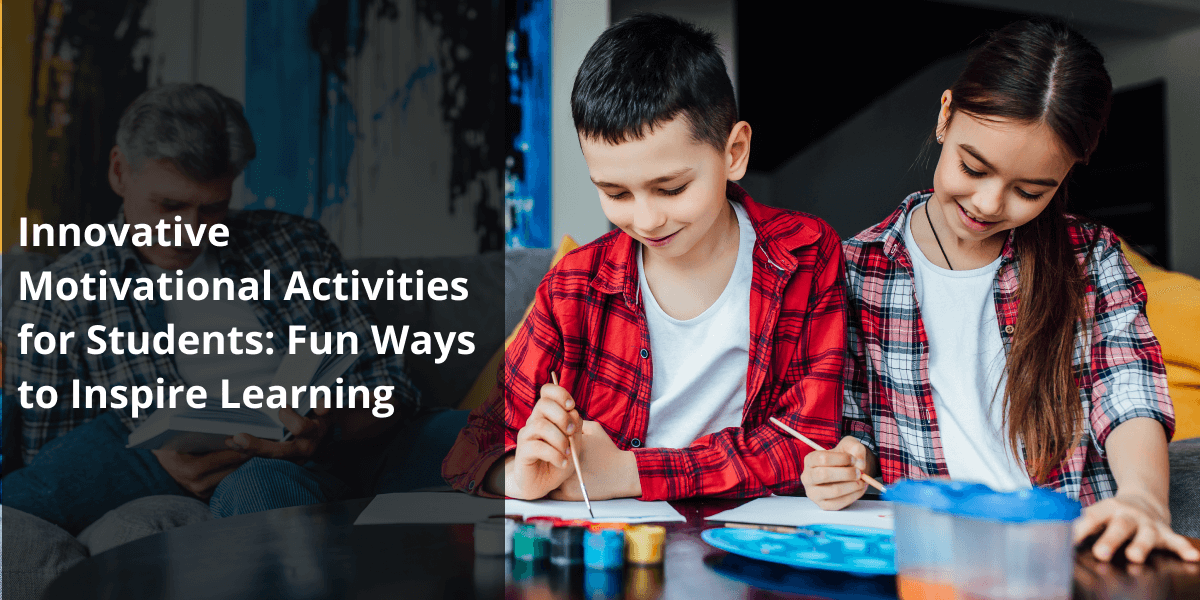- Sakal India Foundation
- May 15, 2024
Table of Contents
Motivational Activities for Students – A plethora of motivating, curious, and critical thinking based captivating motivation activities for students. These include interactive games, challenges, simulations and creative activities that IIHS have developed over the years to ensure that learning is interactive and stands for something. By incorporating invigorating classroom activities, instructors can stimulate students and create a favorable learning opportunity in which young individuals are encouraged to explore new things. Every activity is designed to promote active engagement, collaboration, and real-world and creative application of knowledge to make learning an enriching journey for students.
Benefits of Motivational Games for Students
Using motivational games in educational environments serves as a tool for learning that goes beyond traditional methods. These games make use of engagement and behavior to promote learning outcomes, motivation, enjoyment of the educational experience. Through gamification, this may be accomplished, educators can effectively stimulate interest and foster a positive learning environment.
1. Increased Engagement: Motivational games capture students’ attention and encourage active participation, making learning enjoyable and interactive.
2. Enhanced Learning Motivation: Games provide immediate feedback and rewards, motivating students to achieve learning goals and improve performance.
3. Skill Development: Games promote the development of critical thinking, problem-solving, and collaboration skills through immersive gameplay scenarios.
4. Personalized Learning: Adaptive game mechanics cater to individual learning styles and pace, supporting personalized learning experiences for students.
5. Boosted Confidence: Success in game-based learning boosts students’ confidence in their abilities, promoting a positive attitude towards academic challenges.
Innovative Motivational Activities for Students
Motivational activities serve as dynamic tools to inspire and engage students in diverse learning environments. These activities are designed to stimulate creativity, critical thinking, and teamwork, fostering a proactive approach to learning and personal development. By exploring innovative approaches to motivation, educators can cultivate a stimulating educational atmosphere that encourages exploration and growth.
Activity 1: Escape Room Challenge
Process:
The Escape Room Challenge involves creating a scenario where students work in teams to solve puzzles, decipher clues, and complete tasks within a set time limit. These challenges often incorporate themes related to the curriculum, requiring students to apply knowledge creatively to progress and “escape” the room.
Benefits:
Escape Room Challenges promote collaboration, critical thinking, and problem-solving skills among students. By engaging in immersive and interactive gameplay, students enhance their ability to work under pressure while reinforcing academic concepts in a fun and memorable way.
Activity 2: Project-Based Learning
Process:
Project-Based Learning (PBL) involves students working collaboratively to investigate and respond to complex questions, problems, or challenges. It typically culminates in a tangible project or presentation that demonstrates their understanding and solutions.
Benefits:
PBL encourages self-directed learning, teamwork, and inquiry-based exploration. It fosters creativity, communication skills, and deeper understanding of subject matter as students engage in real-world applications of knowledge.
Activity 3: Gamified Quizzes and Challenges
Process:
Gamified quizzes and challenges transform traditional assessments into interactive games where students earn points, badges, or rewards for correct answers or completing tasks. These quizzes can be customized to include multimedia elements and adaptive questioning.
Benefits:
By gamifying quizzes, educators enhance student engagement and motivation to learn by making assessments more enjoyable and competitive. Immediate feedback and rewards incentivize students to actively participate and strive for academic success.
Activity 4: Role-Playing Simulations
Process:
Role-Playing Simulations immerse students in scenarios where they assume roles and make decisions based on assigned characters or real-world personas. These simulations can simulate historical events, scientific experiments, or social issues.
Benefits:
Role-playing simulations promote empathy, critical thinking, and decision-making skills as students navigate complex situations from different perspectives. They enhance understanding of cause-and-effect relationships and encourage reflection on ethical dilemmas.
Activity 5: Creative Storytelling and Narrative Writing
Process:
Creative Storytelling and Narrative Writing activities encourage students to create original stories, poems, or scripts based on prompts or thematic elements. These activities allow for imaginative exploration of ideas and emotions through writing.
Benefits:
Engaging in creative storytelling develops language proficiency, creativity, and self-expression. It nurtures students’ communication skills, enhances their ability to organize thoughts coherently, and fosters a deeper appreciation for literary concepts and narrative structure.
These activities not only enrich students’ educational experiences but also inspire a passion for learning by connecting academic content with engaging, hands-on activities.
Implementing Motivational Activities in the Classroom
Integrating motivational activities into classroom practices enhances student engagement and promotes active learning. These activities not only make learning enjoyable but also encourage students to apply knowledge in practical contexts. Implementing motivational activities effectively requires thoughtful planning and consideration of students’ interests and learning styles.
Tips for Implementation:
1. Align with Learning Objectives: Ensure that motivational activities are aligned with curriculum goals and educational standards to maximize their relevance and impact on student learning.
2. Provide Clear Instructions: Clearly communicate the objectives, rules, and expectations of each activity to students to promote understanding and active participation.
3. Promote Collaboration: Encourage teamwork and collaboration among students during activities to foster peer learning, communication skills, and collective problem-solving.
4. Offer Flexibility and Choice: Allow students some autonomy by offering choices within activities, such as selecting topics, roles, or approaches, to cater to diverse interests and learning preferences.
5. Integrate Technology: Utilize educational technology tools and resources to enhance the interactive and multimedia aspects of motivational activities, making them more engaging and accessible.
Conclusion
Motivational activities are instrumental in creating a dynamic and stimulating learning environment that inspires students to actively participate and excel academically. By incorporating these activities into classroom practices, educators can cultivate a positive attitude towards learning, foster creativity, and nurture essential skills such as critical thinking and collaboration. Ultimately, the integration of motivational activities enhances the overall educational experience, empowering students to become lifelong learners who are motivated, curious, and prepared to succeed in an ever-evolving world.








Post a Comment